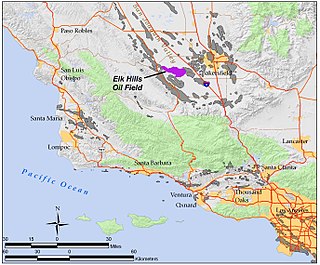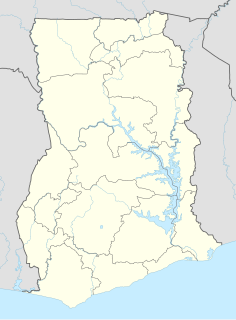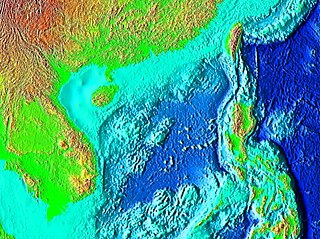
A barrel is one of several units of volume applied in various contexts; there are dry barrels, fluid barrels, oil barrels and so on. For historical reasons the volumes of some barrel units are roughly double the volumes of others; volumes in common usage range from about 100 to 200 litres. In many connections the term "drum" is used almost interchangeably with "barrel".

Azeri–Chirag–Gunashli or Azeri–Chirag–Deepwater Gunashli is a complex of oil fields in the Caspian Sea, about 120 kilometres (75 mi) off the coast of Azerbaijan. It consist of Azeri and Chirag oil fields, and the deepwater portion of the Gunashli oil field. An overall estimated area of the development is 432.4 square kilometres (167.0 sq mi). It is developed by the Azerbaijan International Operating Company, a consortium of international oil companies, and operated by BP on behalf of the consortium. The ACG fields have estimated recoverable reserves of about 5 to 6 billion barrels of petroleum. As of the end of 2005, the production rate from eight pre-drilled wells at the platform was approximately 240,000 barrels per day (38,000 m3/d).

Oil and Gas Development Company Limited commonly known as OGDCL is a Pakistani multinational oil and gas company. It has a primary listing on the Pakistan Stock Exchange, and secondary listing on the London Stock Exchange. Established in 1961 by the Government of Pakistan, it was turned into a public listed company on 23 October 1997. Today it is involved in exploring, drilling, refining and selling oil and gas in Pakistan. It is the market leader in terms of reserves, production and acreage. It is based on Jinnah Avenue, Blue Area in Islamabad, with the Government of Pakistan holding 74% stake in the company. Rest are held by private investors. In 2013, it has revenue of Rs. 223.365 billion and profit before tax soaring at Rs. 90.777 billion.

Mad Dog Oil Field is an offshore oil field located along the Sigsbee Escarpment at Green Canyon blocks 825, 826 and 782, Western Atwater Foldbelt, Gulf of Mexico. The field is located about 190 miles (310 km) south of New Orleans and 150 miles (240 km) southwest of Venice, Louisiana, United States. It is in the depth of 5,000 to 7,000 feet of water.

The South Pars/North Dome field is a natural-gas condensate field located in the Persian Gulf. It is by far the world's largest natural gas field, with ownership of the field shared between Iran and Qatar. According to the International Energy Agency (IEA), the field holds an estimated 1,800 trillion cubic feet of in-situ natural gas and some 50 billion barrels of natural gas condensates. On the list of natural gas fields it has almost as much recoverable reserves than all the other fields combined. It has significant geostrategic influence.

The petroleum industry of Ghana is regulated by the state-owned Ghana National Petroleum Corporation (GNPC) and administered by the state-owned Ghana Oil Company (GOIL).

The Elk Hills Oil Field is a large oil field in northwestern Kern County, in the Elk Hills of the San Joaquin Valley, California in the United States, about 20 miles (32 km) west of Bakersfield. Discovered in 1911, and having a cumulative production of close to 1.3 billion barrels (210,000 dam3) of oil at the end of 2006, it is the fifth-largest oil field in California, and the seventh-most productive field in the United States. Its estimated remaining reserves, as of the end of 2006, were around 107 million barrels (17,000 dam3), and it had 2,387 active oil-producing wells. It is by an order of magnitude the largest natural gas-producing oil field in California, having produced over 2 trillion cubic feet (57 km3) of gas since its discovery, and retaining over 700 billion cubic feet (20,000,000 dam3) in reserve, making it even larger than the Rio Vista Gas Field, the largest non-associated natural gas field in the state.
Energy in Saudi Arabia involves petroleum and natural gas production, consumption, and exports, and electricity production. Saudi Arabia is the world's leading oil producer and exporter. Saudi Arabia's economy is petroleum-based; oil accounts for 90% of the country's exports and nearly 75% of government revenue. The oil industry produces about 45% of Saudi Arabia's gross domestic product, against 40% from the private sector. Saudi Arabia has per capita GDP of $20,700. The economy is still very dependent on oil despite diversification, in particular in the petrochemical sector.
Energy in Gabon is an industry with plenty of potential.
Krishna Godavari Basin is a peri-cratonic passive margin basin in India. It is spread across more than 50,000 square kilometres in the Krishna River and Godavari River basins in Andhra Pradesh. The site is known for the D-6 block where Reliance Industries discovered the biggest natural gas reserves in India in 2003

Vale is an offshore gas field in the North Sea located 16 kilometres (9.9 mi) north of the Heimdal gas field. The depth of the water in the field area is 115 metres (377 ft). Vale is considered a satellite to Heimdal field and is connected to it by a pipeline. Estimated reserves at Vale stand at 2.5 billion cubic metres of natural gas and 21 million barrels (3,300,000 m3) of gas condensate. Vale gas field is expected to produce 1.6 million cubic metres per day of natural gas and 2,600 barrels per day (410 m3/d) of condensate.
The Sakhalin-3 project is an oil and gas development in Sakhalin Island, Russia. It includes four blocks containing 5.1 billion barrels of crude oil and 46 trillion cubic feet of natural gas.
The Lebăda Vest oil field is an oil field located on the continental shelf of the Black Sea. It was discovered in 1980 and developed by Petrom. It began production in 1993 and produces oil. The total proven reserves of the Lebăda Vest oil field are around 50 million barrels (6.8×106tonnes), and production is centered on 10,000 barrels per day (1,600 m3/d). The field also produces around 35.8 million cubic feet/day (1×105m³) of gas and has reserves of 200 billion cubic feet (5.7×109m³).
The Pescăruș oil field is an oil field located on the continental shelf of the Black Sea. It was discovered in 1999 and developed by Petrom. It began production in 2001 and produces oil. The total proven reserves of the Pescăruș oil field are around 100 million barrels (14×106tonnes), and production is centered on 5,000 barrels per day (790 m3/d). The field also produces around 17.9 million cubic feet/day (0.5×105m³) of gas and has reserves of 114 billion cubic feet (3.2×109m³).
The Lebăda Est oil field is an oil field located on the continental shelf of the Black Sea. It was discovered in 1987 and developed by Petrom. It began production in 1989 and produces oil. The total proven reserves of the Lebăda Est oil field are around 50 million barrels (6.8×106tonnes), and production is centered on 15,000 barrels per day (2,400 m3/d). The field also produces around 53.5 million cubic feet/day (1.5×105m³) of gas and has reserves of 242 billion cubic feet (6.9×109m³).
The Sinoe oil field is an oil field located on the continental shelf of the Black Sea. It was discovered in 1991 and developed by Petrom. It began production in 1999 and produces oil. The total proven reserves of the Sinoe oil field are around 20 million barrels (2.7×106tonnes), and production is centered on 3,000 barrels per day (480 m3/d). The field also produces around 10.7 million cubic feet/day (0.3×105m³) of gas and has reserves of 71 billion cubic feet (2×109m³).
Lubiatów-Międzychód-Grotów oil field is a Polish oil field that was discovered in 1993. It is one of the biggest on-shore oil field of Poland. It began production in 1994 and produces oil. Its oil proven reserves are about 38 million barrels (6.0×10^6 m3) and natural gas proven reserves are around 160 billion cubic feet (4.5×109m³).
Dębno oil field is a Polish oil field that was discovered in 2004. It is one of the biggest on-shore oil field of Poland. It began production in 2005 and produces oil. Its oil proven reserves are about 30 million barrels (4.8×10^6 m3) and natural gas proven reserves are around 283 billion cubic feet (8×109m³).

Saltpond Oil Field is an oil field off the coast of Ghana. The field was discovered in 1970 by Signal-Amoco Consortium. The field is currently managed by the Saltpond Offshore Producing Company (SOPCL), Ghana's oldest producer of crude oil.
Barryroe is an oil and gas field discovered in the Atlantic ocean due south of Cork (city). Close to the exhausted Kinsale Head gas field, it is as close as 3 kilometres (1.9 mi) to the Kinsale Head existing pipeline. The discovery is at a water depth of 100 metres (330 ft). Several attempts were made to find a commercial field at the site in the 1970s but although they struck oil, none were commercially viable. It has been rated as the equivalent of a large North Sea oil field.











